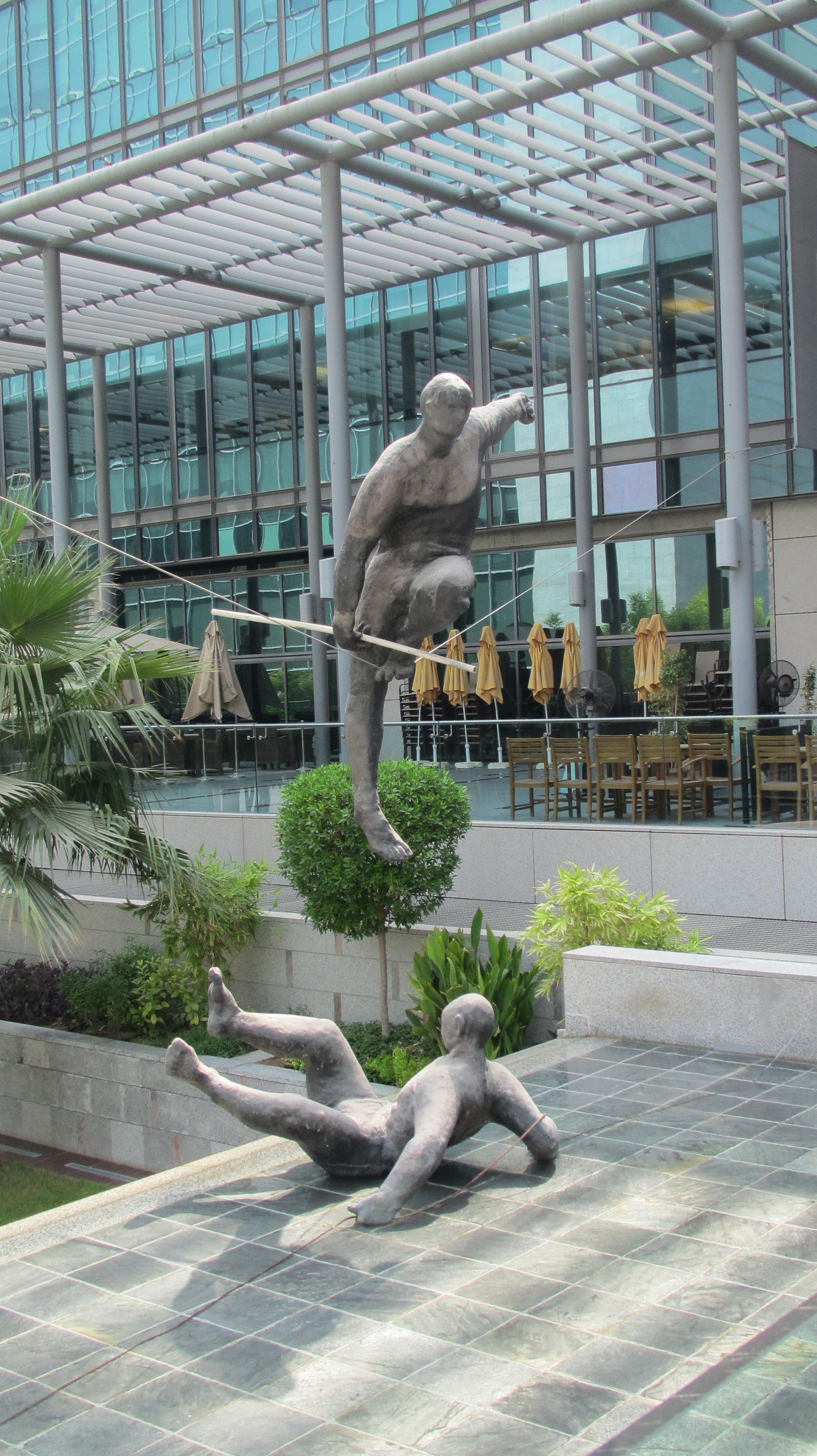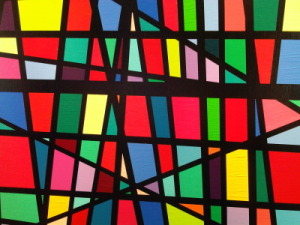Mindfulness and Balance
 Sunday, August 7, 2011 at 4:48PM
Sunday, August 7, 2011 at 4:48PM On a visit to the Gate Village this morning, I took a wrong turn in the Dubai International Financial Centre and soon found myself outside, underneath what is called The Gate, looking up towards the Emirates Towers. With temperatures of over 40 degrees Celsius in Dubai at the moment, outside is not exactly the ideal place to be, but as things turned out, what awaited me there made my day.
Looking around me I was confronted by an exhibition of tightrope sculptures suspended between the buildings.
The effect was mindblowing. I have still not figured out how the actual placement of the sculptures on these ropes was achieved, but to see these figures poised in midair with the skyscrapers of Dubai in the background simply stopped time. All the hustle and bustle taking place in the buildings nearby formed a background contrast to the stillness, precision, presence, and pointed focus captured in the tightrope walkers.
Each figure portrays being totally in the moment as tightrope walkers have to be. If balance is to be maintained, the tightrope walker cannot afford to be planning an outing while precariously sensing the placement of the next footing. S/he has to be mindful of every aspect of the body and the rope. Should another walker be on the rope this mindfulness needs to extend even further. Each step has to be given the attention it requires as a harmony of movement and interaction takes place.
And so it is with mindfulness. Awareness of the present moment, on purpose and non-judgmentally, anchors one with the correct amount of balance in the life situation one finds oneself in. It provides the pause before the next step and thereby the ability to respond instead of simply react.
The sculptures were in various poses (please further pictures in this gallery) and perhaps some of you can identify more readily with the tightrope walker who is also juggling.
A multitude of daily tasks often need to be juggled if sanity is to maintained, but there again mindfulness provides the balance and the often much needed pause to decide on the priorities of the moment.
Not only the tightrope walker and the juggler, but also the trapeze artist has much to teach us about balance and mindfulness in both our inner and outer lives.
In his book, “Wounded Prophet. A portrait of Henri J.M. Nouwen”, Michael Ford states that Henri saw the trapeze of the “The Flying Radleighs” as “a symbol of the concentrated meditative life which offered, in the same instant, both a sense of temporal freedom and a glimpse of eternity”.
When we reflect on this statement, we see that the trapeze act also illustrates true freedom in time, a life filled with presence. However, Nouwen saw that in some inexplicable way, in that moment of being fully present to the present, we are given a glimpse into a world beyond the immediate. These are the moments when something breaks through and we realize there is more to life than meets the eye.

Mindfulness requires practice, both in times set aside specifically to foster the practice and as one goes about one’s day.
Sometimes, five minutes might be all you can manage as you attempt, for example, to follow your breath. Thoughts might overwhelm you and sidetrack you to such an extent that you feel you have fallen off the task at hand. That is okay. That is how it is, while it is and while it lasts.
Next time you begin again and gradually the practice flows out to all aspects of your life.
One of my favorite juggling youtube videos features Thomas Arthur (@thomasart).
His performance is one of perfect balance and fluidity of movement. It is an embodiment, in my opinion, of being totally in the moment.
 art,
art,  balance,
balance,  culture,
culture,  gate village,
gate village,  juggling,
juggling,  mindfulness,
mindfulness,  sculptures,
sculptures,  tightrope,
tightrope,  time,
time,  video,
video,  you-tube in
you-tube in  Art,
Art,  culture,
culture,  mindfulness,
mindfulness,  time
time  Email Article
Email Article 
